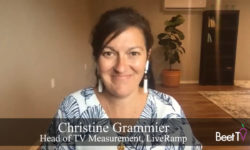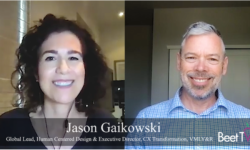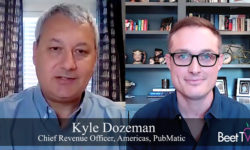If the “Mad Men” and the “Maths Men” were to really work together, it might look a little like the picture Xiao Lin paints.
In this video interview with Beet.TV, the MD for solutions at WPP-owned Xaxis says the two different sides of the ad industry need to re-unite.
He says the key is finding ways to put creativity back at the centrality of ad ops, and scaling personal creative to programmatic scale.
Creative is under-played
“Creative in the programmatic space has always been underutilised, always been a little bit underappreciated,” Lin says.
He blames the separation on creative’s origins in linear media like TV and magazines, which led “creative agencies tend to be separate entities and separate disciplines from the media buying or the media planning entities”.
“In the programmatic industry, that creative activation is an afterthought because most of that creative again comes from the client’s creative agency,” Lin says. “So we’re essentially a lot of times taking or re-purposing what was already created by some agency who really have no connection to the media.”
Scaling creative
Lin wants to change that, so that clients to utilise and recognise the power of creative in the programmatic ecosystem.
But that’s going to involve combining distinct requirements from each side.
“What we really want to do as a company is make sure clients have really bespoke creative that speaks to the consumers in this environment, and also connect that to the data and to the media that they’re running with us,” Lin says.
Dynamic creative optimization (DCO) can help the journey – the practice through which individual items within the creative can be customized for different recipients, leading to thousands of different variations.
That is a big increase from what Lin says is currently only “about three to about four creatives per campaign with clients”.
So technology is nevertheless going to be required to mix personal creative at scale.
Tools for responsibility
For Lin, it all adds up to the quest for “responsible media”, which he defines as: “Taking the trends that we have right now, but evolving them to the trends of the future, which means cookieless, which means more cohort-based optimizations and a huge emphasis on creative variations and creative optimization.”
Xaxis is using two tools to make that mix:
Copilot
Using signals like browser, location, time of day and the weather, “it enables us to create thousands of creative variations on the fly, it introduces thousands more different data inputs to which then our AI Copilot could actually optimise towards the output or the client’s outcome”.
Bid Grouper
“(It) takes cookieless cohorts of the best performing segments of inventory … like browser, creative, time of day, geo – and essentially optimises towards the best cohorts. So creative will only allow our AI and also other AIs to introduce a tonne of measurable aspects of the creative, like the click, how long someone hover on the ad, if they interacted with a video, how long they played a video.”
This video is part of the Global Forum on Responsible Media produced by Beet.TV, GroupM with the 4A’s. This track on creativity, advanced technology and advertising is sponsored by IBM Watson Advertising. For more videos on this topic, visit this page. For more information on IBM Watson Advertising, please visit this page.














































